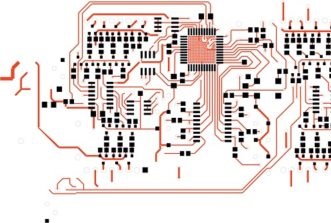This website uses cookies so that we can provide you with the best user experience possible. Cookie information is stored in your browser and performs functions such as recognising you when you return to our website and helping our team to understand which sections of the website you find most interesting and useful.
Robotics inspired by spider silk redefines machine adaptability
Researchers at Tartu University’s Institute of Technology have introduced a groundbreaking robotics concept inspired by the natural web-spinning abilities of spiders. By using this approach, the researchers were able to develop robots that adapt to their physical structures dynamically on demand by literally weaving their bodies on demand, much like spiders spin their webs. Instead of being limited to fixed designs, these robots extrude a heated polymer solution that cools into fine fibres, enabling them to create custom components in situ.
Unlike traditional robots that are designed for specific tasks, this new approach allows for unprecedented adaptability to the environment. In an experiment, the researchers demonstrated the ability of the technology to navigate complex terrains where the robot successfully created a flexible fibre network over simulated obstacles, seamlessly bridging sharp glass shards and soft feathers. This showcased its ability to make real-time adjustments, something predesigned machines struggle to achieve. In another test, the robot spun itself a fibrous “limb” to gently retrieve a fragile flower, illustrating an unprecedented level of dexterity.
“Our approach takes a cue from spiders as nature’s ingenious engineers, yet we found a loophole that lets us sidestep the limitations and excessive complexity of directly imitating spiders,” said Marie Vihmar, lead author of the study.
By exploiting the self-assembling properties of polymer fibres, the team has developed a system that actively responds to unpredictable environments, expanding the potential for robotics in various fields. This technology is particularly relevant for disaster relief work, where robots can adapt and transform their structures in real time. It also lends itself to adaptive construction methods that integrate seamlessly with natural landscapes.
This research, backed by the Estonian Research Council, marks a shift towards robots as dynamic entities capable of both physical and mental reinvention. This innovative approach enables machines to interact with their environment in ways that conventional designs cannot. It not only expands the field of robotics in disaster relief but also reevaluates how machines engage with the world. Instead of forcing the environment to accommodate rigid, predesigned systems, this innovative “forest thinking” approach empowers machines to grow and evolve on the spot.
Paper DOI: https://dx.doi.org/10.1038/s44182-025-00019-2
Related articles
Bio-hybrid drone mimics insects to navigate using smell Fraunhofer looks to automation for electronics disassembly First universal robotics software platform gets seed funding VDMA urges robotics plan for Europe to boost competitiveness Researchers develop novel dataset to boost robot grasping accuracy














